Also, download this story from the electronic issue here
Cosmetics use is as old as the seas. But these beauty products, according to several studies, contain microplastic pollutants that are flowing into the seas, says Angelica Buan in this report.
Microplastic particles are used in products to achieve particularly gentle removal of dirt, dead skin cells or dental plaque, according to the Berlin-based BfR (Federal Institute for Risk Assessment). In cosmetics, natural ingredients, such as biodegradable exfoliators like ground nut shells, oatmeal or coconut fibres, have been replaced with chemicals and synthetics materials to basically lower the cost of production.
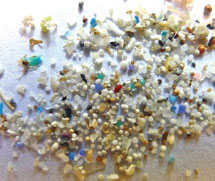
These microplastics are also found in textiles, and in a more recent study on food contaminants led by German Professor Gerd Liebezeit, the miniscule plastics (ranging from 0.4-1mm), have been found in 24 brands of German beers. This is possibly from the filtration and bottling processes, as well as the tap water used for washing beer bottles, he said. However, the German Brewers Association called into question the findings, saying that the products have been produced under the strictest hygienic standards. Moreover, it says that the experiment was not done in a cleanroom environment and was not extensive enough.
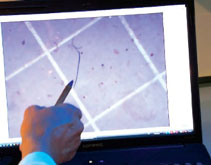
Microplastics also make their way into the water system when synthetic fibres from textiles are shed when doing the washing at home.
Considering the size, how is it that a tiny particle can cause such an extensive threat to the marine ecosystem?
Small but terrible
The billion-dollar beauty care industry is seeing escalating demand for microbeads, also known as microspheres, microparticles, or micro-balloons/micro-abrasives. The sector is forecast to grow at a CAGR of 12.5% from 2013- 2018, or US$2.8 to US$5.2 billion, according to Markets and Markets. Applications include the construction, paints & coatings, medical technology, automotive, aerospace, life sciences, biotechnology, cosmetic & personal care, and oil & gas sectors. The latter four are expected to lead market growth, with regions such as North America, and Asia Pacific, led by China, India and Australia.
Use of plastic microbead exfoliants escalated in the 1990s. Manufacturers liked them because they are smoother on the skin than natural ingredients.
Texas-headquartered market consultancy firm Lucintel says skin care product manufacturers are challenged to provide quality products at a low cost. It is also the largest sector for microbeads, owing to the increased demand for multi-feature products, including moisturising cream with sun protection, anti-ageing, or anti-wrinkling properties.
The Marine Conservation Society in the UK says that three out of four scrubs and peels contain microplastics, especially shampoos, soaps, toothpastes, eyeliners, lip glosses, deodorants and sunblock.
They also serve as functional additives that improve quality, according to BCC Research’s market forecast and have been used by the composites industry as a filler material and are components in many advanced materials in the healthcare and personal care industries, as well as in many speciality R&D applications.
These particles are made of plastics like PE, PP, PET, PMMA, and nylon, of which, PE and PP are the most common.
The Institute for Environmental Studies (IVM), on behalf of the North Sea Foundation, researched several products containing microplastics. One product was said to contain 10.6% of its weight of PE, meaning that for every 200 ml bottle of the product, 21 g of microplastics were being washed into the sewer systems. Another product sample contained 50 micron-sized PET, while others had 10% PE or the equivalent of one teaspoon or 500 mg of microplastics. In a nutshell, consumers use about an average of 2.4 mg of microplastics/person/day.
Turning into a plastic stew
There is no doubt that our oceans have become a stew of plastics. Even the Great Barrier Reef corals, which feed on marine planktons and other microorganisms, have been found to also consume microplastics, according to a study by the ARC Centre of Excellence for Coral Reef Studies at Australia’s James Cook University. This is because the corals are non-selective feeders, says Dr Mia Hoogenboom, who led the study, adding that the tiny stomach cavities of these corals could be filled with plastic that could impair digestion.
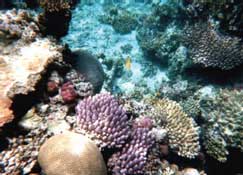
Microplastics have been accumulating in the environment from as early as the 1960s, according to researchers at UK’s Plymouth University, who were pioneers in showing evidence of the invasion in the environment and the material’s potential to release chemical contaminants that are ingested by marine organisms. The research has become the groundwork for policies to reconsider microplastics use in products.
Meanwhile, chemist Sherri Mason of the State University of New York’s College confirms that plastic beads from toothpastes and cosmetic creams have polluted the lakes her team has surveyed. Undertaken since 2012, the studies have also revealed that about 80% of the plastic pollution in the US’s Great Lakes is from microbeads. This research has spurred further studies over the impact of microplastics, as well as policies that either regulate or ban microplastics use.
Banning microbeads
In December 2013, the Council of the European Union called for the elimination of microplastics that are intentionally added to products, in particular to cosmetics and detergents to use their film forming, viscosity controlling and abrasive characteristics.
The Marine Conservation Society paper published in 2012 reaffirms that microplastics found in personal care products are not all filtered by waste water treatment systems. It, thus, urged for a drastic move such as petitioning an EU-wide ban. It also launched an app that lists products with microparticles and those without.
Meanwhile, an organisation called Beat the Microbead has listed down firms that are discontinuing the use of microbeads.
For instance, conglomerate Unilever says that all its products will be plastic-free by 2015. Others like Dutch firms Beiersdorf, Colgate-Palmolive, and French cosmetics firm L'Oréal are also following suit. Procter & Gamble says it will relinquish the use of microbeads by 2017. Johnson & Johnson is starting to phase out products that contain microbeads, with the first phase of reformulations to be completed by the end of 2015.
Also, South American Nature Cosmetics and UK-headquartered Body Shop are replacing the plastic beads with natural ingredients and expect the phase out from this year until 2016. More companies doing the same include Germany-based chemicals firm Henkel, furniture retailer Ikea, Kruidvat, part of Watson Health & Beauty Benelux, and American nutritional supplement company Nature’s Bounty.
This is certainly a positive development since Mark Browne, an ecologist who undertook a study in 2011, found that synthetic microfibres in clothing were seen in large concentrations near sewage outflows.
Browne sampled wastewater from household washing machines, and estimated that around 1,900 individual fibres shed off synthetic clothing eventually end up in oceans. With these findings, Browne urged apparel brands to support his cause against the proliferation of microplastics. Most of the firms he approached declined, except for one female clothing brand Eileen Fisher, which gave Browne a US$10,000 grant to continue sections of his research.
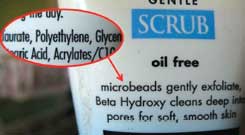
In a similar stance, the American Dental Association (ADA) is taking steps to monitor the safety of commercial toothpastes found to contain PE microbeads. The dental association’s Council on Scientific Affairs, which evaluates the safety of all ADA seal-accepted products, says that it will recall its seal on a product that poses health risk. However, it also says it will continue to evaluate new scientific information on the issue (of microbeads) as it becomes available.
Going back to the basics
With the caveat of using microplast ics gaining momentum, manufacturers are starting to switch to biodegradable beads.
Last year, Impact Colors introduced a range of biodegradable bead exfoliators to replace PE microbeads. The Nature XFol Candelilla beads are completely natural and said to be skin-safe, making them an ideal option for toothpastes and personal care products, according to its maker. As its name implies, the beads are made from wax obtained from the Candelilla plant, which grows in Northern Mexico and Southern Texas.
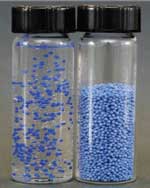
German speciality chemicals firm Evonik has also developed silica alternatives to PE and PP microbead exfoliators. The Sipernat 2200PC and Sipernat 22PC silicas have been listed as identical to nature by the International Natural and Organic Cosmetics Association. Although synthetic amorphous silica is identical to naturally occurring silica (such as sand), in chemical terms, its purity is significantly higher than natural silica due to the technical production process, says Evonik. Sipernat products are said to fully meet the requirements for abrasive particles.
Likewise, France-based Lessonia has introduced its Celluloscrub to supersede PE beads in cosmetics. Biodegradable and renewable, Celluloscrub is derived from wood pulp, which degrades by natural mechanisms, including bacteria or light.
Hence, there is no doubt that various initiatives are being undertaken by cosmetics and personal care products makers to reduce the microplastics load from entering the environment, and eventually finding their way to the oceans.
(PRA)
































